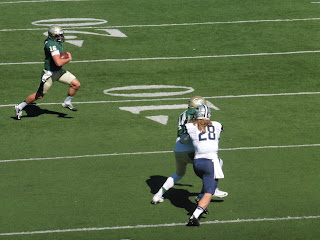Agent of Plutocracy?
In a recent blog post, one Jim Hightower claims that: "[b]izarrely the Supreme Court decreed in its Citizens United ruling that money is a form of free speech." As a result, he says, people with more money can engage in more free speech, and speech is "no longer free," with the result that we live in a '"Plutocracy, not a Democracy."
Citizens United did not equate the expenditure of money with speech. Instead, the Court simply held that quintessential speech --- there a movie critical of a political candidate --- did not lose its status as free speech because production and distribution of the movie cost money. This was not a novel conclusion. In New York Times v. Sullivan, 376 U.S. 254 (1964), the Supreme Court, in an opinion by Justice William Brennan (pictured above) held that states cannot punish speech --- there a newspaper advertisement --- absent proof of "actual malice" by the speaker. In so doing, the Court expressly rejected the claim that the speech in that case --- a full page statement in the New York Times by various civil rights leaders and their supporters --- lost First Amendment protection because it was a paid advertisement. (The advertisement, placed in 1960, cost $4,830, over $38,000 in 2015 dollars.) According to Justice Brennan's opinion, which was unanimous on this point:
"[The advertisement] communicated information, expressed opinion, recited grievances, protested claimed abuses, and sought financial support on behalf of a movement whose existence and objectives are of the greatest public concern [citation omitted]. That the Times was paid for publishing the advertisement is as immaterial in this connection as is the fact that newspapers and books are sold..."
Far from "bizarre," this holding is unremarkable. The exercise of individual liberties often consumes scarce resources, and free societies rely upon the price mechanism to allocate such resources. In such a system, wealthy individuals will be able to exercise certain constitutional rights more often and or in different ways. For instance, as previously noted on this blog, the Constitution protects the right to travel, a bulwark of competitive federalism. Travel can be expensive, with the result that wealthy individuals can exercise this right more often than others, if they so choose. Moreover, the Bill of Rights protects the right to counsel, pursuant to which a criminal defendant can hire the best lawyer she can find. The framers and ratifiers of the Constitution would not have been surprised to learn that wealth individuals can hire more and better lawyers than the poor as a result. Wealth individuals can also purchase more books, movies or art than the poor. As Eugene Volokh has pointed out, a law placing on ceiling on expenditures employed to exercise constitutional rights violates those rights in a straightforward way. A ceiling on expenditures for movies, books, art, advertisements or handbills is no different. It is difficult to reconcile the views of those who disagree with the basic premises of a free society.
Far from "bizarre," this holding is unremarkable. The exercise of individual liberties often consumes scarce resources, and free societies rely upon the price mechanism to allocate such resources. In such a system, wealthy individuals will be able to exercise certain constitutional rights more often and or in different ways. For instance, as previously noted on this blog, the Constitution protects the right to travel, a bulwark of competitive federalism. Travel can be expensive, with the result that wealthy individuals can exercise this right more often than others, if they so choose. Moreover, the Bill of Rights protects the right to counsel, pursuant to which a criminal defendant can hire the best lawyer she can find. The framers and ratifiers of the Constitution would not have been surprised to learn that wealth individuals can hire more and better lawyers than the poor as a result. Wealth individuals can also purchase more books, movies or art than the poor. As Eugene Volokh has pointed out, a law placing on ceiling on expenditures employed to exercise constitutional rights violates those rights in a straightforward way. A ceiling on expenditures for movies, books, art, advertisements or handbills is no different. It is difficult to reconcile the views of those who disagree with the basic premises of a free society.









